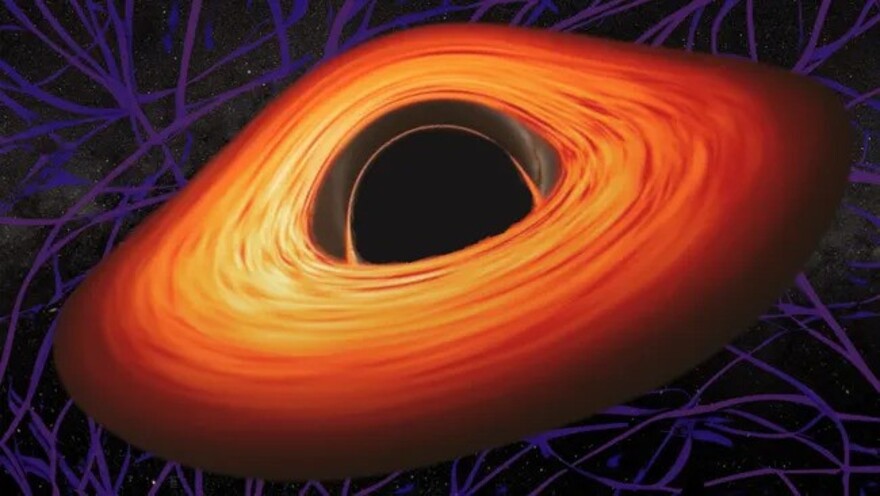Scientists continue to speculate on the problem of supermassive black holes located in the centers of galaxies. They believe that their rapid growth at the beginning of the Universe could have been facilitated by the decay of dark matter.

Mystery of supermassive black holes
Recently, scientists have put forward a new theory on how supermassive black holes could have formed and grown to gigantic sizes in the shortest possible time. These cosmic monsters are at the center of each of the galaxies and, according to current understanding of the Universe, play a key role in the evolution of star systems.
For most of their history, supermassive black holes are thought to have grown by merging and absorbing gas and dust. However, modeling of this process shows that they couldn’t have grown to their present size during the existence of the Universe, having formed from stars.
Indeed, observations from the James Webb Space Telescope show that the young Universe, which we see as it was less than 1 billion years old, is very much populated by large galaxies with massive black holes at their centers.
Direct collapse
For scientists, it is quite obvious that in the usual way these monsters could not reach such a size in those times. Therefore, they put forward a theory of their formation involving a mechanism that is completely uncommon now — direct collapse.
According to it, the first supermassive black holes were formed from giant clouds of gas, which under the action of their own gravity extremely quickly compressed into a single point. This could explain their rapid evolution indeed.
The only problem is that gravity works not only on large scales but also on small scales. Hence, before all this would have happened, the giant clouds would have to break up into individual clouds, and those clouds would have to turn into stars approximately as it is happening now.
Dark matter
And now, scientists have decided that dark matter could solve this whole problem. No one knows exactly what it is, but it is believed to represent 85 percent of the matter in the Universe. These are some particles that don’t interact with the rest of the Universe in any way except through gravity.
Because direct observation of dark matter is almost impossible, scientists are still debating what these particles are. It is quite possible that there are actually more than one kind of them, and some of them may have decayed at the dawn of the Universe’s existence, giving rise to something more familiar to us, such as photons.
And a chance appears here for the direct collapse theory, because something must balance gravity on small scales for it to work, but not do so on large scales. And the pressure from photon energy matches it better. And now scientists have a remarkable explanation for where they might have come from.
According to www.space.com


